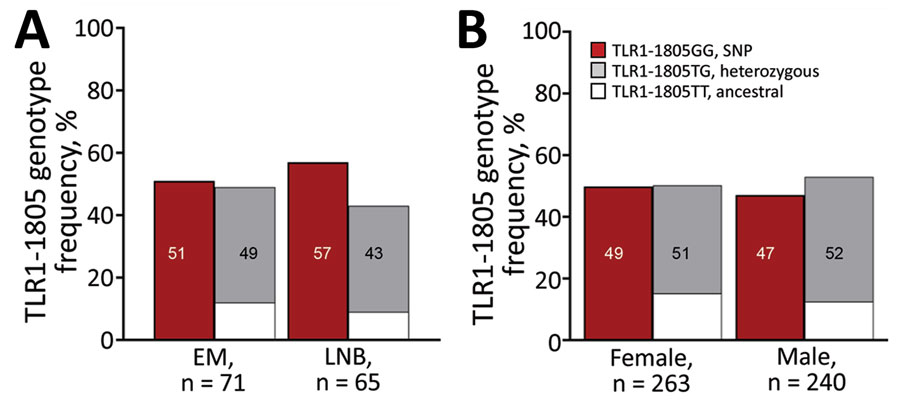Volume 28, Number 4—April 2022
CME ACTIVITY - Research
Unique Clinical, Immune, and Genetic Signature in Patients with Borrelial Meningoradiculoneuritis1
Figure 5

Figure 5. Frequency of TLR1–1805GG polymorphism among patients with Lyme borreliosis treated in Ljubljana, Slovenia, during 2006–2013 (A), compared with the general population of Europe (B). A) Lyme borreliosis patients with EM vs. LNB; B) general population by female vs. male sex. The TLR1 SNP results in an exchange of thymine (T, ancestral) with a guanine (G) allele at position 1805; GG corresponds to both copies of the SNP allele (SNP), TG with one copy (heterozygous), and TT with no copies (ancestral). The information in the general population was obtained from Ensemble genome browser 104 and is based on data from the 1,000 Genomes Project (https://useast.ensembl.org/index.html). EM, erythema migrans; LNB, Lyme neuroborreliosis; SNP, single-nucleotide polymorphism.
1Part of the research reported here was presented at the 31st European Congress of Clinical Microbiology & Infectious Diseases (online), July 9–12, 2021.
2These first authors contributed equally to this article.
3These senior authors contributed equally to this article.